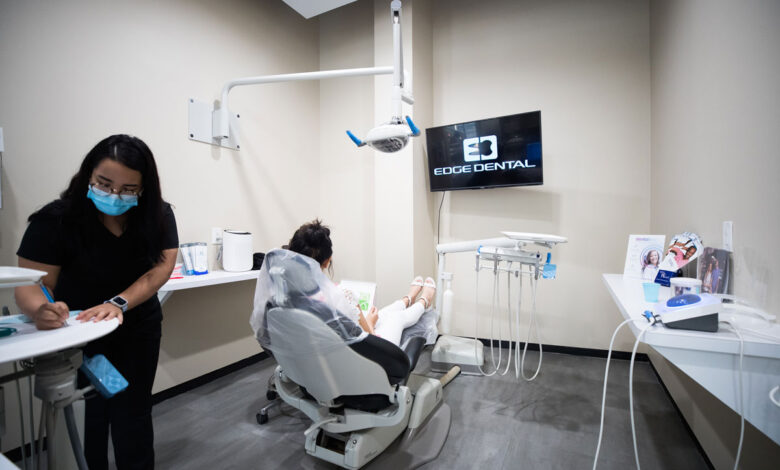What Are the Benefits of 3D Imaging in Root Canal Recovery?
What Are the Benefits of 3D Imaging in Root Canal Recovery?

Root canals have long been a go-to procedure to save infected or damaged teeth. But as with any medical procedure, the success of a root canal depends on several factors, including accurate diagnosis and precise treatment. This is where modern technology, particularly 3D imaging, comes into play. But what exactly is 3D imaging, and how does it contribute to root canal recovery? Let’s explore the many advantages of using this advanced technology in root canal procedures and recovery.
Understanding 3D Imaging Technology in Dentistry
Before diving into its benefits, it’s important to understand what 3D imaging in dentistry is. Traditional X-rays provide two-dimensional images, giving a flat view of dental structures. While useful, they often lack the depth and detail needed for intricate procedures like root canals. 3D imaging, on the other hand, uses Cone Beam Computed Tomography (CBCT) to create a complete three-dimensional view of your teeth, gums, nerves, and jawbone. This high-resolution, 360-degree perspective allows dentists and endodontists to visualize and diagnose problems more precisely than ever before.
How 3D Imaging Improves Root Canal Diagnosis
One of the key advantages of 3D imaging is its ability to provide clear, detailed images of the internal structures of your teeth. Unlike traditional 2D X-rays, which can sometimes obscure certain areas, 3D imaging allows dentists to see the entire tooth from all angles. This is particularly beneficial in diagnosing conditions that require a root canal.
For example, 3D imaging can help identify small fractures, hidden canals, and abscesses that may be missed on a standard X-ray. By offering a comprehensive view, 3D imaging ensures that nothing is overlooked, enabling a more accurate diagnosis and more effective treatment plan.
Better Treatment Planning with 3D Imaging
Another significant benefit of 3D imaging in root canals is its ability to aid in treatment planning. Root canals involve removing infected or damaged tissue from the tooth’s pulp and filling the cleaned-out space to prevent further infection. It’s a delicate process that requires extreme precision.
Using 3D imaging, dentists can create a detailed map of the tooth’s interior, including the location of nerves and the shape of the canals. This allows them to plan the procedure more effectively, minimizing risks and improving the overall outcome.
Enhanced Accuracy During the Procedure
Once the procedure begins, the advantages of 3D imaging continue. By using 3D images, dentists can work with enhanced accuracy, which is especially crucial when navigating the intricate root canal system. Traditional X-rays provide limited guidance during the actual procedure, but 3D imaging gives a detailed roadmap.
This precision is particularly important when dealing with challenging cases, such as teeth with extra or curved canals. In such cases, 3D imaging reduces the risk of missed canals or incomplete cleaning, which are two common causes of root canal failure.
Shorter Recovery Time with 3D Imaging
A well-performed root canal significantly impacts recovery time, and 3D imaging plays a major role in ensuring faster recovery. The precise planning and execution allowed by 3D imaging minimize the chances of complications during and after the procedure.
For example, fewer post-procedure infections and reduced trauma to the surrounding tissues are two outcomes of a more accurate root canal procedure. With fewer complications, patients often experience less pain and swelling following the procedure and can return to normal activities more quickly.
Improved Patient Safety
Patient safety is a top priority in any dental procedure, and 3D imaging enhances this aspect in several ways. First, it reduces the need for multiple X-rays, limiting the patient’s exposure to radiation. Additionally, because 3D imaging provides a comprehensive view of the tooth and surrounding structures, there is less risk of damaging nearby nerves or blood vessels during the procedure.
Furthermore, the ability to detect problems early using 3D imaging often means that patients can avoid more invasive procedures down the line, further improving their safety and comfort.
Reduced Need for Follow-up Treatments
One of the most frustrating aspects of dental care for patients is the need for follow-up treatments due to incomplete procedures or complications. Root canals can be especially prone to requiring additional treatment if the initial procedure doesn’t fully address the problem.
By improving the accuracy of both the diagnosis and the procedure itself, 3D imaging significantly reduces the likelihood of such issues. This not only saves the patient time and money but also reduces the stress and discomfort of undergoing additional dental work.
Enhanced Post-Procedure Monitoring
The benefits of 3D imaging don’t end once the root canal is complete. This technology also allows for more effective post-procedure monitoring. After a root canal, it’s important for the dentist to check that the tooth is healing properly and that there are no signs of infection or other complications.
3D imaging can be used during follow-up visits to ensure that the tooth is recovering as expected. This detailed monitoring helps catch any potential problems early, making it easier to address them before they become serious.
Increased Patient Comfort and Confidence
Dental procedures, especially root canals, are often associated with anxiety for many patients. One of the advantages of 3D imaging is that it helps to alleviate some of this anxiety by improving patient confidence in the treatment. Knowing that the dentist has access to the most advanced diagnostic tools and can plan the procedure with extreme precision gives patients peace of mind.
In addition, 3D imaging often leads to shorter, less invasive procedures, which further contributes to patient comfort. The reduced need for follow-up treatments and lower risk of complications also mean that patients can feel more secure in the knowledge that their root canal will be successful.
The Role of 3D Imaging in Complex Root Canal Cases
Some root canal cases are more complex than others. For instance, patients with unusual tooth anatomy, multiple canals, or calcified canals present a greater challenge for dentists. In these cases, the ability to visualize the tooth in three dimensions becomes even more critical.
3D imaging allows dentists to approach these difficult cases with a higher level of confidence and precision. By fully understanding the internal structure of the tooth, they can perform the procedure more effectively, increasing the likelihood of a successful outcome.
Conclusion: The Future of Root Canal Recovery with 3D Imaging
As dental technology continues to evolve, 3D imaging is becoming an increasingly important tool in procedures like root canals. The benefits are clear: improved diagnosis, better treatment planning, enhanced accuracy, and faster recovery times all contribute to a more positive patient experience.
For anyone undergoing a root canal, 3D imaging offers the reassurance of knowing that the procedure is being performed with the most advanced tools available. Whether it’s reducing the need for follow-up treatments, improving patient safety, or ensuring a smooth recovery, 3D imaging is revolutionizing the way root canals are done, making the process more efficient and comfortable for patients.




